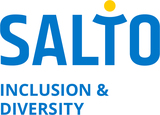Examples of rural projects – Get inspired!
This page gives an overview of different types of projects (exchanges, voluntary service, youth initiatives,...), addressing different types of rural challenges and receiving different types of funding.
'Our villages are so nice because they are our villages'
- Multilateral youth exchange (cooperation with neighbouring countries)
- Co-ordinating and hosting organisation: Council for Prevention of Juvenile Delinquency - SPPMD, FYRO Macedonia
How did you find your partner organisations?
I met partners from France, Finland, Spain, Latvia and Turkey at the SALTO Training Course for Rural Youth (Turkey, 2007) where we started to develop this project idea. We invited four more partners from the South-East Europe region: Croatia, Serbia, Bosnia-Herzegovina and Montenegro, who we found through our networks in the Balkans.
How are you going to address potential language difficulties during the activity?
We were aware that the level of English of the youngsters from these areas was not very high. Therefore we planned 2 months of intense preparation in each of the countries, practising some situations with the participants, that would be common at the exchange: e.g. dinner in the host family, shopping at the market, basic introductions, etc.
At the beginning of the exchange we've planned a one-day language game to break the ice and to establish basic communication, not only between the participants, but also so that they can communicate with the Macedonian host families.
In addition, a list of Macedonian words will be circulated among all partners during the preparation period and all participants are invited to learn as much of it as possible. We are planning to organise a quiz on people's knowledge of Macedonian at the end of the exchange and give some very interesting, traditional Macedonian awards to the participants with the best knowledge of Macedonian language and traditions.
How are you going to mix the different groups?
Every national group will prepare a drama, role-play, poem or other type of audiovisual presentation from their village, which represents their rural reality. Participants will also cook their lunch together in small mixed groups, facilitated by one leader. Thus, they are will improve their intercultural and language skills. They will need to go shopping on their own in order to learn and practise different languages and customs. For the first three days, the group will stay in a youth hostel and this period will be used mainly to build a good group atmosphere. Afterwards, participants will stay in small groups with Macedonian families in three different villages in the countryside - and they'll meet only for some evening programmes.
^^ top ^^
'Country Lifestyle II'
- Multilateral Youth Exchange
- Hosting organisation: Landjugend Niederösterreich - Austria (regional branch of Austrian Rural Youth)
What were the main learning points and results of this exchange?
During the exchange, we addressed three topics in different workshops: alternative energy, migration and regional development. Participants discussed the situation in the various countries regarding the topics mentioned in the different workshops. They identified different opportunities and challenges and developed an action plan on how the various countries can improve the situation. The group presented these results in public at a closing event, which drew many people from the local community. The closing event was an ideal occasion for local people to get to know participants from the UK, Italy, Estonia, Poland, Latvia and Austria.
How did you solve communication problems and break language barriers?
- Our working language was English. When we divided participants into (working) groups, we made sure that there were always two participants from one country in each group so that they could help each other out with vocabulary, translation, etc.
- In addition, each evening there was a little evaluation with the participants to see if everybody felt comfortable in the group and to detect potential problems at an early stage, in order to counteract them immediately, if necessary.
What were the costs? How did you finance and co-finance the exchange?
We applied for 21.000 euros from the European Youth Programme (predecessor of Youth in Action). In addition we had private sponsors (e.g. the local bank) and some of the organisation's own resources.
How did you find your partner organisations?
We built up the contacts to the various youth organisations involved over several years, when our team members took part in different study sessions and training courses about Rural Youth Europe as well as Youth Programme activities in Austria, Poland and England. Each one of the Austrian participants established new contacts and friendships on those activities, which then led to a successful 'Country Lifestyle I' exchange. 'Country Lifestyle II' was the follow up to the first one.
- More info: www.noelandjugend.at; www.landjugend.at
^^ top ^^
'Future under construction - Youth @ work in Europe'
- Multilateral Youth Exchange
- Hosting organisation: Westfälisch-Lippische Landjugend - Deutschland (in co-operation with Rural Youth Europe)
What did the exchange try to reach? What were the aims?
We addressed different rural themes during the youth exchange:
- Brain drain from rural to urban areas and from poor member states of the European Union to richer ones,
- low access to youth information and youth work opportunities
- low level of participation of rural youth in youth policy
The participants discussed these issues over the course of one week and came up with solutions to improve the living conditions of young people in rural and geographically isolated areas. The conclusions showed the contribution that youth organisations could make to sustainable development and the participation of young people in rural areas across Europe.
The participants also improved their practical skills and knowledge regarding youth participation, lobbying activities and networking. The whole youth exchange was built up around values such as participatory democracy, tolerance and human rights.
What kind of follow-up was planned after this youth exchange?
The participants themselves developed a report and a photo album (on a CD) of the event, as well as a DVD with some video clips about the exchange. These were distributed to the all participants and their organisations, and they are also available on the websites of the hosting organisation and on the Rural Youth Europe website.
On the RYEurope website participants are able to continue to discuss issues raised at the exchange and they are coached in how to apply their learning to other projects in their own local organisations.
Articles about the youth exchange were published in the newsletters, magazines and websites of the different member organisations, as well as in various local newspapers all over Europe.
To guarantee a better follow-up we set up the following tools:
- networking between the participants, experts and programme team
- give advice and support for new projects (intercultural exchanges)
- circulate information within our network about emerging projects and activities
. - More info: www.ruralyoutheurope.com, www.WLL.de
^^ top ^^
'Rural Paparazzi'
- Trans-national youth initiative
- Co-ordinating organisation: Obre't'ebre in La Aldea - Spain
Where did the project idea come from?
This project idea was born during the SALTO TC Rural in Turkey in 2007 and the partners of the project are participants from that course. We applied for a Trans-national Youth Initiative in Spain. At present we are planning the Advanced Planning Visit in la Aldea. Our youngsters are thinking of organising the welcome party for this visit. They are so excited that they want to celebrate their arrival with bulls (an important and very traditional welcome).
What does the context and the preparation for your project look like?
We are going to plan and share responsibilities and tasks. But the most important thing is that we get to know each other a bit more. Right now, many youngsters are studying English intensively and they are very happy to host our partners. It is going to be a big event in the area and the first international youth activity that the EU is financing in the village and in the province of Tarragona.
What is the project all about?
The project is about an online gallery with 5 countries. Every month, all the groups of rural young people will take photos according to the theme of the month (agreed themes: culture and people, landscapes,...), which will be uploaded onto the online gallery. The youngsters will be able to vote for the best 'shots'. The best pictures will be printed out for an exhibition. This exhibition will rotate between the five partner countries involved in the project. If everything goes well, we will organise an exchange at the same time as the photo exhibition in Poland next summer.
- More info: www.obretebre.org
^^ top ^^
'Direction -> Youth Centre'
- Youth initiative
- Organisation: FARMa - Poland.
The coordinating group consists of ten young people. The 3 main goals of the youth initiative are:
- Create a youth centre. We almost succeeded, meaning that we got a place for ourselves, but not a big one; so we can do activities, but not the way we would like to do them. Anyway, it is very important that youngsters feel they have their own place. We organised different workshops, with up to 50 participants altogether.
- The TOTU festival. This is a youth culture festival. Hundreds of kids and youngsters took part in it, in addition to all the young music groups, young photographers, etc.
- Internet youth information service. We are working on it now and are organising workshops for a group of youngsters to learn how to run such a service. Our target group is rural young people, from 14-19 years old. There will be about 10 young people working on this information website.
Where do you get the funding for this project?
The main funding is from the YOUTH programme, plus a lot of voluntary work, and some services are for free. For example, we didn't have to pay for many things we needed to rent for the festival and we even managed to get free permanent hosting for the new webpage. It is much easier to get contributions and services in kind in our rural area, rather than money in our bank account.
How did you involve the local community and authorities?
After last year's local elections everything has changed. Our local authorities don't see a partner in us anymore and they want to use us for their private (political) aims. That's why we are now reluctant to cooperate with the local government.
Our youth NGO has built up 2 years of experience, and many local institutions are willing to cooperate with us now. The beginning was hard, but now they see how much we can do and that we are a good partner.
Regarding the people in the community, we first of all needed to involve more young people. The key to our success is that our organisation is, in fact, the young people themselves. It works really well: new youngsters see that their friends from school do projects with us and they gradually start being interested in participating as well.
- More info: www.fundacjafarma.pl/en
^^ top ^^
'4H Job shadowing'
- Practical training experience - Job shadowing
- Organisations involved: Finnish 4H Federation, Danish 4H and Landboungdom.dk
What was the project about?
Staff and volunteers from rural youth organisations can learn a lot from their colleagues abroad. Therefore, the Danish Education officer of 4H took part in a 'job shadowing' programme, visiting the Finnish 4H Federation in Helsinki, which has years of experience in international rural youth work.
The Danish 'shadow-person' stayed for one week, getting an introduction into the Finnish 4H Federation, the organisation and its structures. Furthermore, she visited specific projects, like school activities and youth clubs in Tampere and Mikkeli, as well as the headquarters in Helsinki. She had the chance to learn about different Finnish 4H activities on a local, regional and national level.
The aim was to familiarise herself with the youth programme and to find out about the possibility of future co-operation, making use of the European Union Youth (in Action) programme.
Where did the funding come from?
For this 'job shadowing' project, the EU youth programme covered 90% of the costs. It was a big success and resulted in many fruitful co-operation projects together.
Why would you recommend a job shadowing project?
If you want to know how rural youth organisations work in other countries, you could profit a great deal from such an exchange. Staff or volunteers from different youth organisations can learn from each other, exchange good practice and set up Youth in Action projects in the future. This type of 'job shadowing' makes you think about how you can adapt ideas from other countries and organisations: very inspiring .
It's also possible for more than one person from an organisation to visit another for 'job shadowing'.
- More info: www.4h.fi, www.danmarks4h.dk
^^ top ^^
'Inclusion through rural youth participation projects - Best practices all over Europe'
- Support measures: seminar
- Co-ordinating organisation: MIJARC Europe - Cáceres, Spain
What was the project about?
The seminar gathered young youth workers from rural areas to exchange their opinions, ideas and best practices on the theme of 'Youth participation for a sustainable development of rural areas'. The project focused on different topics, such as sustainable development, rural youth participation and European citizenship. Each participant joined one of the three groups to discuss, to understand and to try to find common positions on those issues.
The main aim was to encourage our member movements to work on the topic of 'Youth participation for a sustainable development in rural areas'. By improving their knowledge on this issue, we believe they are able to start new projects or create new partnerships that can improve their daily lives in rural areas. We think we achieved this aim, even though it is a work in progress... which is part of a long-term project called 'Change the village - Challenge yourself! You(th) can make a difference, a co-operation project of Rural Youth Europe and MIJARC Europe.
- More info: www.mijarc.org/europe
^^ top ^^
'Multilingual 4H brochure'
- Support measures - youth information
- Implementing and applying organisation: Finnish 4H Federation
What was the project about?
The aim of the project was to make a leaflet in 4 languages: Finnish, Estonian, Russian and English. The leaflet was a co-operation project between Finnish 4H and Estonian 4H. It gives basic information about 4H activities both in Finland and in Estonia, as well as about the Youth in Action Programme. In both countries, Estonia and Finland, it is important to give information in different languages about 4H: in Finland there are many immigrant families involved in 4H and in Estonia, information also needs to be in Russian to include this big local minority. In addition, at local level, associations do not have enough information about the Youth in Action Programme of the European Union and its possibilities. Therefore more information is needed - in local language at the grassroots level.
How did you go about the project?
The project team consisted of 4 members of Finnish 4H and 4 members of Estonian 4H. The project team met twice, once in Finland and once in Estonia, to agree on all details of the publication. It was written by themselves and finally, 7000 copies were printed. The publication became a big success and is used in many local, regional, national and European rural youth activities.
- More info: www.4h.fi
^^ top ^^
'Intergenerational Integration'
- European Voluntary service (EVS)
- Hosting organisation: Movimiento de Jovenes Rurales Christianos - Spain
Context - problems - needs
The project is taking place in a rural area, in Plasenzuela, a rural village of 620 inhabitants in Western Spain, which is a mainly cattle-farming area. It is an under-privileged rural area because of high levels of emigration towards big cities.
We are in the first phase of the project which will last for 5 years. There are currently two European Union volunteers from Germany and Estonia, who work jointly with the Spanish staff members to create opportunities for young people, so that they stay in the village.
Outcomes
The project is very positive for young Europeans, as it totally changes their idea of Europe, as well as their opinion of small villages and of Spanish young people. For the village, having EVS brings an outside view on how to do things and solve problems. The foreign volunteers create new a dynamic in the village, with the young people, but also with the other inhabitants.
People involved
The project is having quite a wide impact, not only on the young people of Plasenzuela and on the EVS volunteers. The adults of local associations (e.g. housewives' club, hunting group, sports clubs,...) are also supporting the project and are interested in cooperating. Having EVS volunteers assembles 'all the social strengths of a village'.
- More info: www.ruralescristianos.org/MJRC.html
^^ top ^^
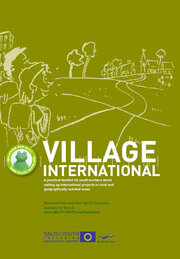 www.salto-youth.net/
www.salto-youth.net/
VillageInternational/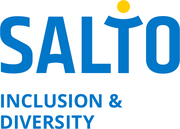
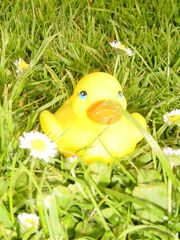
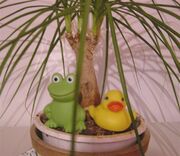 Protected from exclusion
Protected from exclusion
Downloads
The following downloads are available:
- Village International - setting up international projects with rural youth - 2007
A step by step manual through the different stages of setting up a youth project in your rural or geographically isolated area. With lots of practical tips and tricks. Based on SALTO TC Rural 2007. (Rightclick & download to your PC)
